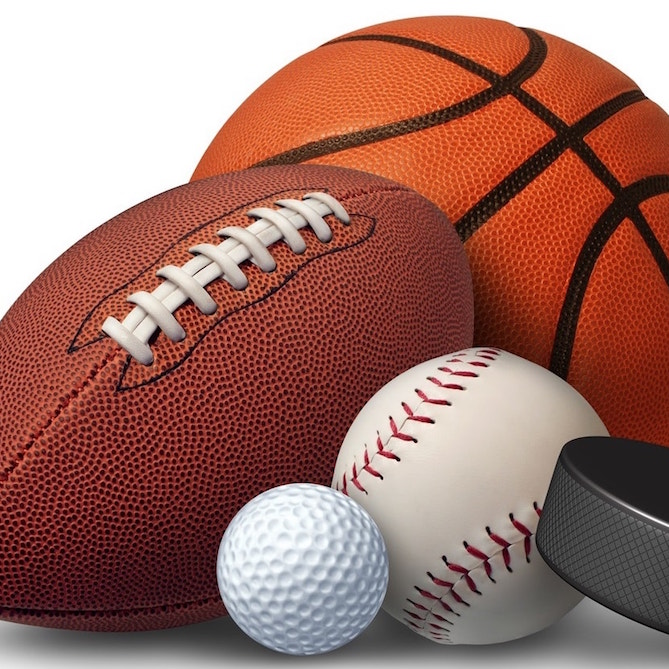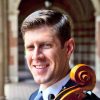
Sports and Cello: Starting the Discussion
Jonathan Thomson
We see the dramatic moment in sports all the time: with the game on the line, a player steps up to shoot the game-winning free throw, kick the field goal, or take the penalty kick. Make or miss, social and news media chatter about these moments for days afterward. Documentaries and TV series offer detailed views inside the lives of athletes and behind-the-scenes depictions of how teams practice and communicate throughout their seasons. An athlete’s comments on any issue can reverberate through our society for weeks. Sport is everywhere—it is unavoidable. Though many musicians and teachers may see it as a competitor to practice time and music’s place within the culture, athletes and musicians share many common experiences and can learn from each other. While athletes personal lives are discussed publicly and the smallest actions on and off the field psychoanalyzed, the musician’s life is sometimes seen to be private and even mysterious.

I wrote my dissertation to explore connections between music and sports, specifically how to train in a way that fosters the ideal mind-body connection for high-stakes performance. Some have written about the moment of performance itself and tried to describe the best mental state for it (sometimes referred to as flow, peak performance, being “in the zone,” etc…). Books like The Inner Game of Tennis and Zen in the Art of Archery are particularly insightful, and help show how the mind and body should interact. I’m interested in extending this further into the training process itself, to discuss practical ways to develop a reliable mind-body connection through daily practice.
While an athlete may have a team of coaches working with her in every area of conditioning and skill acquisition/maintenance, the musician’s experience is largely solitary. Think for a moment just how unsupervised and self-regulated a music student’s time is in an average week: the student will have perhaps a one hour lesson, maybe a chamber music coach who can give brief remarks about technical elements, and a conductor who can very rarely provide pointed directions about her instrument. A student who practices regularly easily spends over 90% of her time on the cello alone. It is critical, then, that students learn how to practice effectively. Further, this training process must not be seen as separate from the performance itself. Many say that the only way to get better at performing and handling nerves is through experience: “get out there and do it!” This adage holds a lot of truth, but it is a disservice to our students to describe what performing should feel like mentally, tell them to practice six hours a day, then say “good luck, go get ’em” as they walk out onto the stage. Instead, we should instruct them about how to simulated the performance mindset and develop a sound mind-body connection in the practice room.
Most students, at all levels, have experience in sports that can inform their approach to the cello. Many naturally and unconsciously apply their experiences from sports to music, both in physical coordination/body awareness and in handling pressure situations. As teachers, we should build upon the experiences they bring with them, rather than only complaining about having to reschedule their lesson because of soccer practice. Sports can also provide opportunities for cellists of all ages to explore the mental aspects of performance. Even professionals may find it easier to strengthen and maintain their own mental habits away from the cello than on stage, where so much is at stake (while of course being careful to choose an athletic activity with minimal risk of injury).
In my blog posts, I will talk frequently about marathon training. Though I am by no means an elite runner, running has become a crucial counterpoint to my musical pursuits. I’ve been a dedicated runner for the past ten years, during which I’ve completed five marathons, numerous races at the other common distances (1/2 marathon, 10k, and 5k), completed “streaks” of running consecutive days, and experienced injury, disastrous races, and reached satisfying goals. Even though I’m not a super fast or impressive runner, setting and pursuing goals in running helps me think about my musical life. My experiences in running and cello both inform the other: they are each daily disciplines, require planning for far off goals, are largely solitary, and are mental, physical, and even spiritual in nature. Many concepts of preparing for a marathon can inform the way we practice cello and consider its relationship to every part of our lives. I’ll be writing about these ideas in upcoming posts.
Up next: Rule #1 and Rule #2
Subjects: Practicing
Tags: cello, cellobello, CelloBlog, Jonathan Thomson, Practice, sports, training
